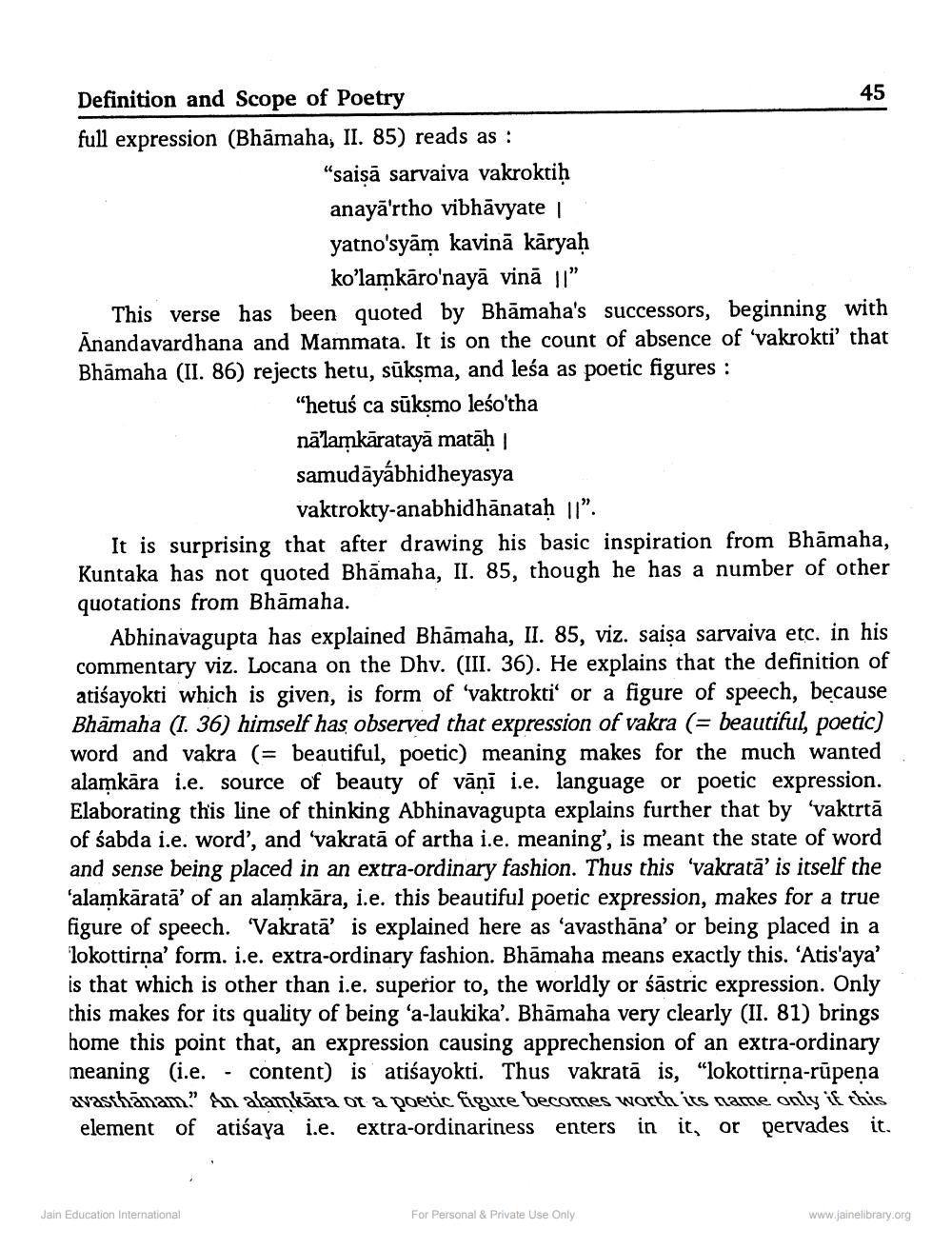________________
45
Definition and Scope of Poetry full expression (Bhāmaha, II. 85) reads as :
"saisā sarvaiva vakroktiḥ anayā'rtho vibhāvyate | yatno'syām kavinā kāryaḥ
ko'lamkāro'nayā vinā ll" This verse has been quoted by Bhāmaha's successors, beginning with Anandavardhana and Mammata. It is on the count of absence of 'vakrokti' that Bhāmaha (II. 86) rejects hetu, sūksma, and leśa as poetic figures :
"hetuś ca sūksmo leśo'tha nālamkāratayā matāḥ | samudāyábhidheyasya
vaktrokty-anabhidhānataḥ 11". It is surprising that after drawing his basic inspiration from Bhämaha, Kuntaka has not quoted Bhāmaha, II. 85, though he has a number of other quotations from Bhāmaha.
Abhinavagupta has explained Bhāmaha, II. 85, viz. saiņa sarvaiva etc. in his commentary viz. Locana on the Dhv. (III. 36). He explains that the definition of atiśayokti which is given, is form of 'vaktrokti' or a figure of speech, because Bhāmaha (1. 36) himself has observed that expression of vakra (= beautiful, poetic) word and vakra (= beautiful, poetic) meaning makes for the much wanted alamkāra i.e. source of beauty of vāņi i.e. language or poetic expression. Elaborating this line of thinking Abhinavagupta explains further that by 'vaktrtā of sabda i.e. word', and 'vakratā of artha i.e. meaning', is meant the state of word and sense being placed in an extra-ordinary fashion. Thus this 'vakratā' is itself the ‘alamkāratā' of an alamkāra, i.e. this beautiful poetic expression, makes for a true
peech. 'Vakratā' is explained here as avasthāna' or being placed in a lokottirna' form. i.e. extra-ordinary fashion. Bhāmaha means exactly this. 'Atis'aya' is that which is other than i.e. superior to the worldly or śāstric expression. Only this makes for its quality of being 'a-laukika'. Bhāmaha very clearly (II. 81) brings home this point that, an expression causing apprechension of an extra-ordinary meaning (i.e. - content) is atiśayokti. Thus vakratā is, "lokottirna-rūpena avasthanam." An alamkara or a poetic figure becomes worth its name only if this element of atiśaya i.e. extra-ordinariness enters in it, or pervades it.
Jain Education International
For Personal & Private Use Only
www.jainelibrary.org




